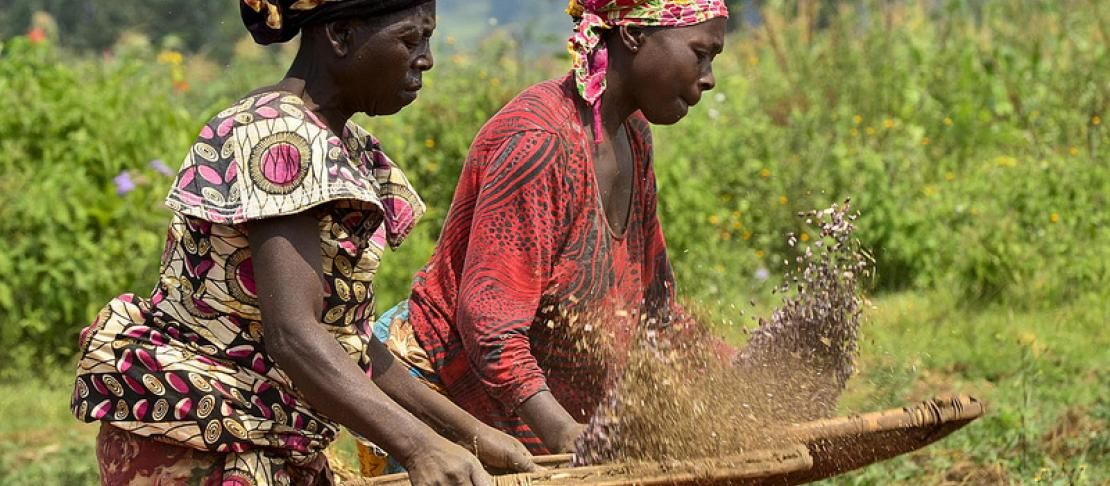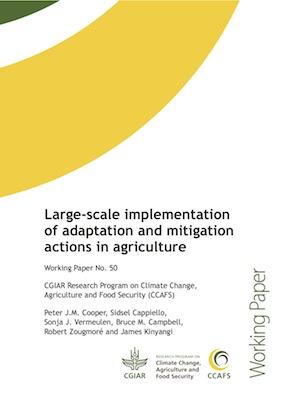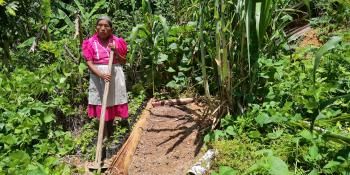Scaling-up the climate-smart agricultural sweet spot

Can we implement climate-smart agriculture at scale both globally and in Africa? This was the opening question for our Head of Research Sonja Vermeulen when presenting at the “Climate-Smart Agriculture” side event held in parallel to the Africa Agriculture Science Week (AASW).
Based on her outline, and the recently published Working Paper on successfully scaled-up climate-smart agriculture, the CGIAR Research Program on Climate Change, Agriculture and Food Security (CCAFS) argues that not only can climate-smart practices be implemented and scaled-up - in many countries this is already happening!
The paper 'Large-scale implementation of adaptation and mitigation actions in agriculture practices' meticulously analyses facinating large-scale case studies from around the globe that have fulfilled all or nearly all of the sought-after climate-smart goals.
In this case, large-scale means covering tens of thousands of farmers or tens of thousands of hectares.

WOrking Paper 50
What sweet spot are we talking about?
The 'sweet spot' means an agricultural activity or practice achieving the ‘triple-win’ – climate adaptation and resilience building, climate mitigation, while securing national food security development goals.
Scaling-up climate-smart practices would mean expanding this ‘sweet-spot’ - more food for today while minimizing our environmental footprint for tomorrow.
Read: What's so smart about climate smart agriculture?
Depending on the country and its level of development, there are different goals that a country would want to maximise.
Case studies from Africa give hope
The ‘Drought Tolerant Maize for Africa Project”, implemented in 13 African countries, focuses primarily on food security and climate adaptation instead of mitigation.
On the flip side, Denmark has been very successful in reducing greenhouse gases from their agricultural sector, through its Agreement on Green Growth. However, the country hasn’t necessarily aimed for adaptation in this project.
Niger on the other hand succeeded to fulfil all three climate-smart areas: increase in agricultural productivity, vegetative cover and carbon sequestration while reduced sedimentation of watercourses. In fact, water and soil erosion were reduced in 88 percent of the sites.
The Morocco Green Plan initiative has really boosted the country’s agricultural production. Compared to the period 2005-2007, production has increase by 190 percent in the olive sector and 52 percent for cereals. In Tanzania communities are helping the government take the lead on forest management, involving 7,000 farming households as a way to protect natural forests against degradation, with climate-resilience and adaptation co-benefits.
Lesson: government support is essential
Reading these case stories makes me inclined to think that not only can climate-smart agriculture practices be implemented and scaled-up in Africa, the continent is already taking the lead on agricultural activities to help reduce number of hungry, while including mitigation aspects and building climate resilience.
Learn more: Tried and tested solutions for food and farming as climate changes
Dr Vermeulen pinpointed factors needed in order to ensure to ensure successful up-scaling, which starts with strong governmental support:
Almost every single of these case studies have had serious governmental backing.
In addition, as upfront cost are substantial, we are talking multimillion dollars per year just to get things going, without financial support these projects will probably not reach more than a few farmers.
Learn more about successful climate-smart practices around the world, and not only in Africa by downloading the Working Paper: Cooper, PJM, Cappiello S, Vermeulen SJ, Campbell BM, Zougmoré R, Kinyangi J. 2013. Large-scale implementation of adaptation and mitigation actions in agriculture.
The side event on Climate-Smart Agriculture was convened by the Forum for Agricultural Research in Africa (FARA).


